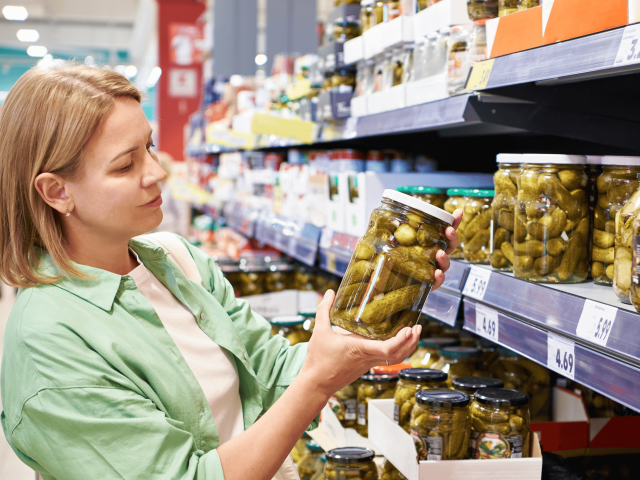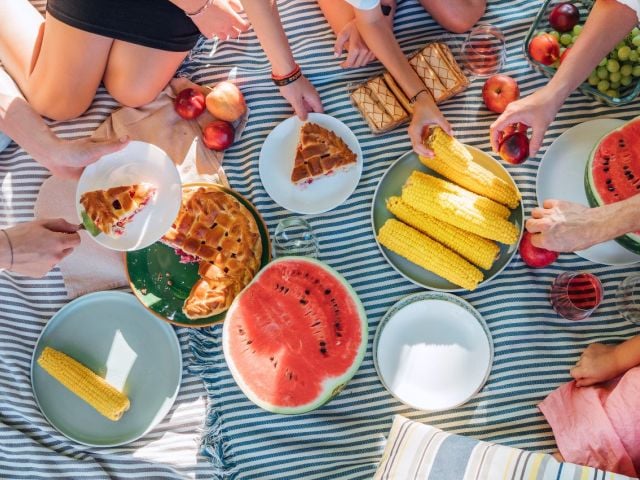
It’s no secret kids love bright colors. Just look at the snack aisle in the grocery store, lined with vividly packaged products marketed to children and teens.
But the source of the often eye-poppingly bright food inside the packaging may be toxic artificial food coloring.
Chemicals marketed to kids and teens
Many foods marketed to kids contain artificial food dye, including such snack mainstays as flavored yogurt, applesauce and fruit cups, chips and crackers, trail mix, packaged baked goods containing fruit, and granola and protein bars.
It doesn’t help that these foods are also typically high in sweeteners, salt and fat.
In one study, researchers found nearly all candy and fruit-flavored snacks contained artificial dye. Across all food categories, it could be found in nearly two in five products in the store the study analyzed. Only fresh produce did not contain artificial food dye.
California’s environmental health agency has said consumption of these chemicals “can result in” behavioral problems in children, including hyperactivity. Kids’ developing bodies make them especially vulnerable to food dye exposure.
A wide range of brands and fast food chains have begun to phase out artificial colors, according to ingredients labels and news releases. But the chemicals are still found in many products on supermarket shelves, including many you’d never suspect were colored artificially.
Last year, a bill banning Red Dye No. 3 in California was signed into law. Now another bill has passed the state Assembly and is up for debate in the Senate. It would ban public schools in the state from serving foods containing any of six commonly used artificial colors.
Even with these positive developments, parents and caregivers who want to help their kids avoid artificial food dye may find themselves swimming upstream.
One of these ideas might work
Looking for ways to help your kids steer clear of artificial food dye? Try one of these ideas:
- Lower consumption of packaged foods. Artificial dye is typically an ingredient in packaged foods, which are usually ultra-processed. If you help your kids steer clear of them, you’ll be a leg up meeting this challenge. Your go-to brand may not have a dye-free option, but another company might.
- Study labels. The best way to know what’s in any individual food is to study the ingredients label. Tip: Dyes are often but not always listed last. The easiest way to cut consumption of artificial dyes is to seek versions of the food made without these chemicals. Just know a single brand or fast food chain might cut them from some products but not all.
- Drink more fresh, filtered water. Cutting back on consumption of soda – diet or sugar-sweetened – is a great step. It’s a huge source of exposure to artificial food dye, not to mention other chemicals, including artificial sweetener.
- Focus more on options, less on denial. Rather than tell kids they can’t have something, offer alternatives, such as fruit instead of packaged food.
- Choose USDA-certified organic. Processed foods with this labelcan't contain artificial food dye.
- Emphasize brightly colored produce. The best competition for splashy packages of ultra-processed foods is the rainbow of colors in fresh fruit and vegetables. The red of a strawberry, the yellow of squash, the dark purple of grapes – these are all attractive enough to appeal to kids. Make sure to consult EWG’s Shopper’s Guide to Pesticides in Produce™ to find out which has the most and least pesticide residue, and which it’s best to buy organic to reduce the risk of pesticide residue exposure.
- Embrace variety. A wide-ranging diet can best meet your children’s nutritional needs. Plus, the greater the variety, the less their exposure to specific problematic ingredients or contaminants.
- Offer healthy swaps. Some substitute foods are nearly indistinguishable from the artificially enhanced version. Try:
- If your kid loves flavored yogurt, stir some fresh fruit into plain Greek yogurt. Fruit-flavored yogurt typically contains artificial food dye.
- Instead of packaged trail mix or granola, try making your own with undyed dried fruit. Or just offer nuts.
- You can make crackers and cookies, and even ice cream and popsicles at home – it’s both healthier and less expensive.
- Oatmeal in the morning or other unsweetened cereal, topped with cinnamon and fresh fruit, can substitute for artificially dyed cereal. Bonus points for sprinkling some nuts and seeds on top.
- Serve up kale chips – kids have been known to fight over them.
- A pairing of dark chocolate and nuts makes for a great occasional treat.



